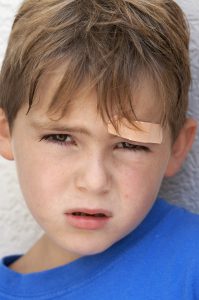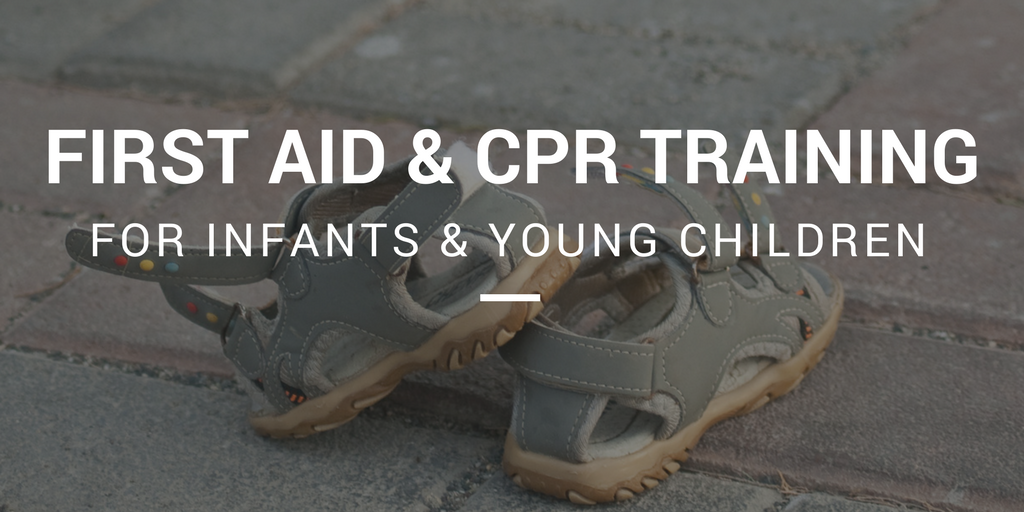First Aid and CPR training is one of the most versatile skills sets available. Not only are these skills a key part of overall emergency preparedness, but they can save lives in everyday emergencies too.
Pediatric first aid is a specialized form of training that organizations often require staff to have if they are working with children. Here are some more details on this particular type of first aid and CPR, whether you’re a camp counsellor, sports coach, or just interested in expanding your first aid knowledge!
Benefits of Pediatric First Aid
 Infants and children are more vulnerable to accidents so even knowing basic first aid can help, should a situation call for it. However, dedicated first aid and CPR training for infants and young children is important because:
Infants and children are more vulnerable to accidents so even knowing basic first aid can help, should a situation call for it. However, dedicated first aid and CPR training for infants and young children is important because:
- Children can’t tell an adult when something is wrong, so knowing how to recognize the signs of injury and distress can help in many situations
- It provides you with specialty knowledge about specific scenarios such as a choking infant or child/infant-related trauma
- CPR treatment is applied very differently to infants and children compared with adults – caregivers must know how to safely treat younger patients in any situation (keep reading for more on this!)
When Would I Use Pediatric First Aid?
For organizations that provide childcare or host youth programs, having first aid training specific to infants and children can help staff recognize, prevent, and respond in the event of an accident or emergency. Here are some scenarios where you could use your training if a child in your care experiences a medical emergency or injury:
- If you find a child or infant unconscious, you can confidently assess whether they are injured or not, and provide care until paramedics arrive, including rescue breathing, checking for bleeding and general monitoring
- If a child is choking, and cannot cough, speak, or breathe, you can work to help dislodge the object through back blows and abdominal thrusts (or chest thrusts in the case of an infant)
- If you need to control external bleeding, treat burns or accidental poisoning, or help a child experiencing a seizure, you can determine the right first aid to apply until you can get the child to a medical clinic or hospital, or until paramedics arrive
[Resource: Red Cross Pediatric First Aid/CPR/AED]
Like other first aid certifications, Pediatric First Aid & CPR Training needs to be refreshed every three years to stay current. For details on the organizations that can provide you with all types of First Aid training (including pediatric), check out our previous blog article, “Save a Life with First Aid.”
What Are the Differences Between Infant, Child, and Adult CPR?
 The techniques for infants, children and adults vary when it comes to administering CPR, as each type of patient has very different physiologies. Ensuring that you are using the right technique can help reduce additional, unnecessary harm or injury. [Resource: CPR Certified]
The techniques for infants, children and adults vary when it comes to administering CPR, as each type of patient has very different physiologies. Ensuring that you are using the right technique can help reduce additional, unnecessary harm or injury. [Resource: CPR Certified]
Why CPR is needed
- Adult: Most likely to need CPR because of cardiac arrest
- Child: Most likely to need CPR because of a blocked airway – children’s tongues are larger in proportion to their mouths, their airways are more narrow, and they tend to put things like toys or other foreign objects in their mouths
- Infant: Most likely to need CPR if unconscious and unresponsive to stimulus – to check for consciousness, never shake; gently stroke the infant or tap the soles of their feet
Administering CPR
CPR techniques are regularly assessed and updated to ensure the best care is provided to a patient. Until recently, hands-only CPR was recommended, especially for those with no proper training. However, conventional CPR (combination of compressions and rescue breathing) has better outcomes by comparison. [Source: MultiBrief / JAMA Pediatrics]
Before administering CPR, check whether the patient is breathing by listening carefully for 10 seconds (note: intermittent gasps aren’t breathing). If there are no sounds of breathing:
- Adult: Start compressions using two hands, one on top of the other with fingers interlaced, in the center of the chest, while keeping your arms and shoulders in a straight line above the patient. The depth of compression should be about two inches with a rate of at least 100 compressions/minute. Provide rescue breaths by tilting the head back slightly, pinching the nose shut, and placing your mouth over the patient’s to create a seal, before blowing air in to make the chest rise. Deliver two breaths and continue compressions [Source: American Red Cross]
- Child: If the child isn’t breathing, deliver rescue breaths by tilting the head back slightly (be careful not to tilt too far as it can block the airway further in a child/infant), pinching the nose shut, and placing your mouth over the patient’s to create a seal, before blowing air in to make the chest rise. Be sure to do this more gently than with an adult by using your cheeks to expel the air, rather than the full power of your lungs. Deliver two rescue breaths and check again for signs/sounds of breathing. If the child does not respond to the rescue breaths, administer 30 quick compressions in the same manner as with an adult, followed by another two rescue breaths [Source: American Red Cross]
- Infant: If the infant isn’t breathing, tilt the head back slightly (be even more gentle than with a child due to the delicacy of an infant’s airway), create a complete seal over the infant’s mouth and nose, and blow in for one second to make the chest rise, before delivering two rescue breaths. If the infant doesn’t respond to the rescue breaths, administer 30 quick compressions using two fingers (middle and ring) in the center of the chest (the depth of compression should be about 1.5 inches), followed by another single blow, and two rescue breaths as before [Source: American Red Cross]
Continue with the combination of compressions and rescue breathing until:
- You see obvious signs of life (breathing)
- An AED is available and ready to use
- Another trainer responder or EMS professional is available to take over
- You’re too exhausted to continue (if someone with you is trained in CPR, you can alternate to avoid becoming tired too quickly)
- The scene becomes unsafe
When to call 911
- Adult: Call 911 immediately, unless you believe they are unconscious because of a blocked airway – in which case, start CPR right away and call 911 after a minute of CPR
- Child/Infant: Start CPR before calling 911 – an infant or young child’s chances of survival are much higher if they receive CPR immediately (if you are alone, call 911 after two minutes of CPR).
FACT: Children are more likely to survive and have better neurological outcomes outside of a hospital when they receive conventional CPR (vs. compression-only CPR) from a bystander [Source: MultiBrief / JAMA Pediatrics]
Terms and Conditions
All content provided on this blog is for informational purposes only. The owner of this blog makes no representations as to the accuracy or completeness of any information on this site or found by following any link on this site. The owner will not be liable for any errors or omissions in this information nor for the availability of this information. The owner will not be liable for any losses, injuries, or damages from the display or use of this information. This policy is subject to change at anytime.

